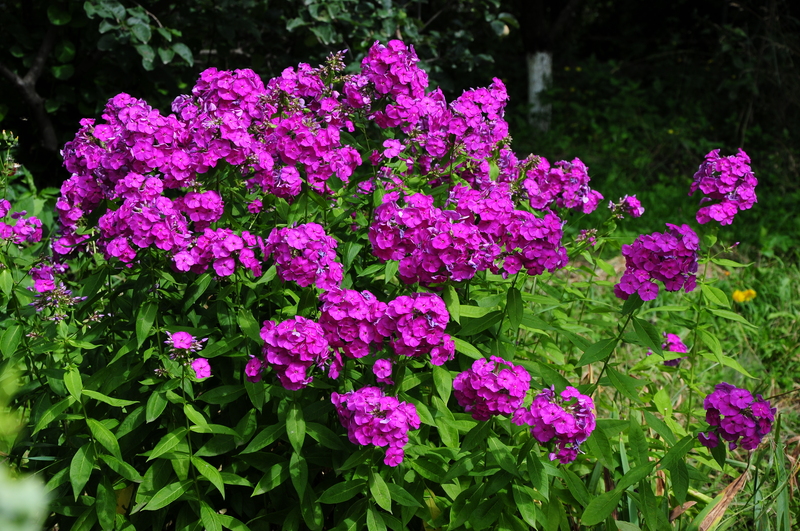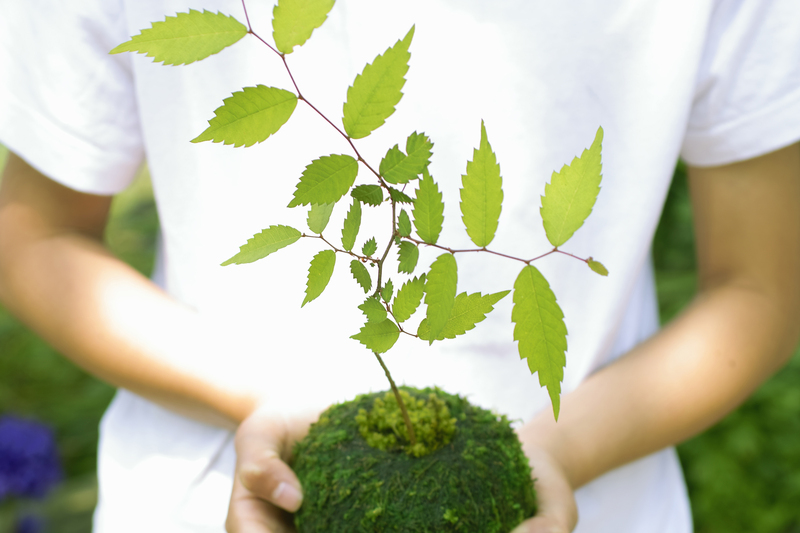Best Tropical Plants for Vibrant UK Garden Displays
Are you dreaming of a lush, exotic haven in your British backyard? The UK may not be known for a tropical climate, but with the right choice of tropical plants, you can create a stunning, vibrant garden display that will transport you to far-flung destinations without leaving home. In this comprehensive guide, we'll explore the top tropical plants for the UK, how to care for them, and how to arrange them for maximum impact. Create your own paradise with our expert tips and plant recommendations!
Why Choose Tropical Plants for UK Gardens?
Tropical plants are famous for their breathtaking foliage, striking textures, and vibrant colours. Adding them to your UK garden provides:
- Exotic visual appeal: Their bold leaves and flowers stand out and make a true statement.
- Seasonal interest: Many tropical species offer prolonged blooms and colourful foliage through summer and early autumn.
- Architectural structure: Their strong shapes create depth and drama in planting schemes.
- Unique wildlife value: Some tropicals attract pollinators like bees and butterflies.
You might think these beauties won't survive the British climate, but many hardy tropical plants for UK gardens thrive outdoors with the right placement and a little winter protection.

Best Tropical Plants for UK Gardens
Selecting the best tropical plants for a UK garden display involves choosing varieties with proven resilience to unpredictable weather. Below we list top picks for bold, eye-catching displays:
1. Banana Plants (Musa basjoo)
Musa basjoo, also known as Japanese Hardy Banana, is the most popular banana plant for UK gardens. This dramatic tropical boasts enormous paddle-shaped leaves and an awe-inspiring height of up to 4 meters. While it seldom bears edible fruit in Britain, its impact as a foliage plant is unrivalled.
- Hardiness: Survives temperatures to -10?C with mulch protection.
- Care Tips: Grow in full sun or dappled shade; shelter from strong winds to prevent leaf shredding.
- Uses: Plant centrally as a focal point, or in tropical-themed borders.
2. Cannas (Canna indica & hybrids)
With spectacular red, orange, or yellow blooms and lush, colourful foliage, cannas are unbeatable for tropical flair. Some cultivars even feature purple or variegated leaves for added drama.
- Hardiness: Hardy in milder areas; in colder areas, lift rhizomes and store frost-free over winter.
- Care Tips: Prefers fertile, moist soils and full sun to partial shade.
- Uses: Plant in pots or beds for bold splashes of colour.
3. Tetrapanax (Tetrapanax papyrifer 'Rex')
The 'Rex' Chinese Rice Paper Plant is adored for its giant, hand-shaped leaves (up to 60cm wide!) and fast growth. It's a genuine stand-out in any display.
- Hardiness: Can tolerate down to -10?C, especially when mulched.
- Care Tips: Enjoys sun or part shade, needs space to spread as it may sucker.
- Uses: Provides bold, architectural interest at the back of borders.
4. Tree Fern (Dicksonia antarctica)
As one of the most iconic tropical plants for UK gardens, the tree fern brings a Jurassic World ambiance to shaded spots.
- Hardiness: Hardy to around -5?C to -10?C with a fleece wrap in winter.
- Care Tips: Likes moist, rich soil and shelter from hot midday sun.
- Uses: Perfect for woodland gardens or as a shady patio centrepiece.
5. Cordyline australis
Known as the Cabbage Palm, this spiky-leaved beauty thrives in coastal areas and lends an exotic, palm-like effect.
- Hardiness: Survives to -7?C or lower, but young plants benefit from winter protection.
- Care Tips: Tolerates most soils; best in sun or partial shade.
- Uses: Use as an accent plant or in containers for height.
6. Ginger Lilies (Hedychium species)
These sensational flowering tropicals feature fragrant blossoms and lush, sword-like leaves. Hedychium gardnerianum and H. densiflorum are best suited to the UK.
- Hardiness: Survives down to -5?C with mulch; lift and store in very harsh winters.
- Care Tips: Thrive in sheltered, sunny border with moist, humus-rich soil.
- Uses: Add scent and colour to mixed tropical borders.
7. Trachycarpus fortunei (Windmill Palm)
This classic fan palm is superbly hardy, withstanding British winters and rewarding you with architectural fronds in abundance.
- Hardiness: Hardy to -15?C once established.
- Care Tips: Prefers full sun to dappled shade; avoid waterlogged soils.
- Uses: Ideal as a specimen in lawns, patios, or tropical beds.
8. Fatsia japonica (Japanese Aralia)
For year-round tropical effect, Fatsia japonica is unbeatable. Its glossy, deeply-lobed leaves look impressive even in winter.
- Hardiness: Down to -15?C with ease.
- Care Tips: Thrives in shade and tolerates coastal winds.
- Uses: Great for filling gaps at the back of borders or under trees.
9. Hostas
Although native to temperate regions, bold-leafed hostas create a distinctly tropical look and pair perfectly with other exotics.
- Hardiness: Fully hardy across the UK.
- Care Tips: Best in moist, shady spots; protect from slugs with barriers or nematodes.
- Uses: Excellent companion for ferns and gingers in tropical-themed gardens.
10. Elephant Ears (Colocasia & Alocasia)
For jaw-dropping foliage, few plants rival the enormous, heart-shaped leaves of elephant ears (especially Colocasia esculenta). They thrive in UK summers and bring unrivalled drama.
- Hardiness: Tender, but survive as tubers if lifted before frost.
- Care Tips: Water freely in summer and feed regularly; overwinter tubers indoors.
- Uses: Perfect for bog gardens, containers, or alongside ponds.
Cultivating a Successful Tropical Display in the UK
Creating an authentic tropical garden in the UK is all about knowing how to mimic a rainforest's warmth, shelter, and moisture. Here's how to make your exotic plant collection thrive and look its best:
1. Choose the Right Location
- Most tropical plants prefer sheltered spots protected from cold winds.
- Maximise warmth by planting near sun-facing walls or fences that radiate heat.
- Mix sun-lovers (like canna and banana) with shade-lovers (like fatsia and ferns) to fill every niche.
2. Improve Soil and Drainage
- Incorporate organic matter such as compost or well-rotted manure to mimic lush, fertile tropical soils.
- Ensure good drainage--especially important for palms and bananas, which hate soggy roots.
- Mulch generously to conserve moisture and insulate roots during winter.
3. Feed and Water Generously
- Tropical plants are typically fast-growing and hungry--apply high-nitrogen feeds during spring and summer.
- Maintain regular watering, particularly during heatwaves (but avoid waterlogging).
- Container tropicals may require daily watering in peak summer!
4. Protect Tender Plants in Winter
- Use fleece, hessian, or straw wraps on vulnerable crowns (e.g. tree ferns, bananas) before hard frosts arrive.
- Move pots into greenhouses, or bring bulbs/rhizomes under cover for safekeeping.
- Apply thick mulch to roots in borders for extra insulation.
5. Pair Plants for Maximum Exotic Effect
- Combine spiky cordylines, lush hostas, and giant-leafed bananas for strong contrasts.
- Use colour echoes in foliage and flowers to unify the space (reds, oranges, and lime greens).
- Layer heights: start with smaller groundcovers, add mid-height cannas/hostas, and punctuate with towering bananas or palms.
Stylish Tropical Garden Design Ideas
A great tropical garden display is about more than just the right plants--it's about atmosphere, texture, and sensory delight. Here are some design ideas to help you capture tropical charm in your UK outdoor space:
1. Bold Borders and Jungle Beds
- Plant in generous drifts for a lush, enveloping effect.
- Mix leaf shapes and sizes: pair huge tetrapanax or banana leaves with the fine fronds of ferns and delicate ginger lilies.
- Let plants intermingle -- less formality, more jungle tangle!
2. Exotic Containers
- Grow tender exotics (colocasias, alocasias, tender palms) in large pots, so they can be moved indoors over winter.
- Create mini tropical displays on patios with groups of foliage-rich containers.
3. Water Features
- Install ponds or bubbling urns and surround them with canna lilies, elephant ears and ferns for a steamy rainforest vibe.
- Add moisture-loving exotics like gunnera or reeds for extra impact.
4. Pathways and Structures
- Wind stepping stone paths through tall, dramatic planting.
- Use bamboo screens, rustic pergolas, or driftwood features to complement the theme.
5. Accent Lighting
- Highlight statement plants with uplighters to create magical night-time effects--particularly striking with tree ferns or palms.
- Add string fairy lights for a festive, holiday atmosphere.

Frequently Asked Questions about Tropical Plants in the UK
-
Can I really grow tropical plants in the UK?
Yes! With careful selection and a bit of winter protection, many exotic-style plants thrive outdoors in most parts of the UK. -
Which tropical plants are most hardy?
Trachycarpus fortunei, Tetrapanax rex, Fatsia japonica, and Musa basjoo are among the hardiest choices for UK gardens. -
When should I plant tropicals?
Plant out after the risk of frost has passed (usually late May to early June for most of UK). -
How do I protect my exotic plants in winter?
Mulch roots, wrap stems and crowns, and bring tender container plants indoors.
Conclusion: Your Stunning UK Tropical Garden Awaits!
With a little knowledge and some clever plant choices, you can achieve a truly vibrant, tropical garden display in the UK. Remember to blend robust, evergreen foliage with bold flowers, make use of pots for tender specimens, and always provide a little extra winter protection as needed. Embrace the drama, experiment with form and colour, and you'll soon be enjoying your very own paradise at home!
For the best results, revisit this list of best tropical plants for UK gardens, stay creative, and let your personal jungle story unfold. Happy planting!
```